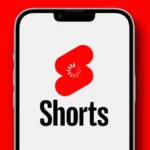
Google’s newest generative AI video model, Veo, was unveiled earlier at the I/O developer conference. This AI model can produce “high-quality” 1080p resolution videos that are longer than a minute and feature a wide range of visual and narrative elements. Three months ago OpenAI unveiled a similar AI model called Sora, its fascinating text-to-video AI, Google is attempting to take away some of the spotlight with Veo.
According to Google’s report, Veo possesses “an advanced understanding of natural language,” which allows the model to comprehend cinematic words like “timelapse” or “aerial shots of a landscape.” Google claims that the movies that are produced are “more consistent and coherent,” showing more realistic movement for people, animals, and objects throughout scenes. Users can control the desired output using text, image, or video-based instructions.

During a press briefing on Monday, Demis Hassabis, the CEO of Google DeepMind, stated that Veo can create storyboards and extended scenarios and that further features are being investigated by Google.
Most people who want to test Veo out for themselves will probably have to wait a while, as is the case with a lot of these AI model previews. To find out how it can best help creatives, Google says it’s inviting a small group of filmmakers and artists to test the concept. Based on these partnerships, Google says it will make sure that “creators have a voice” in the development of Google’s AI technologies.
Additionally, a private preview of some Veo capabilities will be made available to “select creators in the coming weeks” inside VideoFX; to be among the first to test it out, you can join the waitlist by signing up here. In any case, Google also intends to “in the future” offer some of its features to YouTube Shorts.
Google has created several video creation models in the past few years, ranging from the Lumiere model it unveiled in January of this year to Phenaki and Imagen Video, which generated cheesy, frequently distorted video clips. Before Sora was unveiled in February, this model was among the most amazing ones we had seen. According to Google, Veo is even more capable of comprehending content in videos, emulating real-world physics, producing high-definition outputs, and more.
OpenAI, which had hinted in March that Sora would be ready in “a few months,” is currently pitching to Hollywood and intends to make it available to the general public later this year. Additionally, the company is working to add audio to Sora and may provide the model directly in video editing programs such as Adobe Premiere Pro. Given that Veo is also being pitched as a tool for filmmakers, Google’s initiative may find it more difficult to compete given OpenAI’s early advantage.
Discover more from TechBooky
Subscribe to get the latest posts sent to your email.







